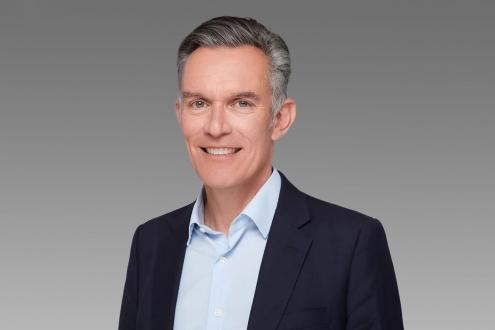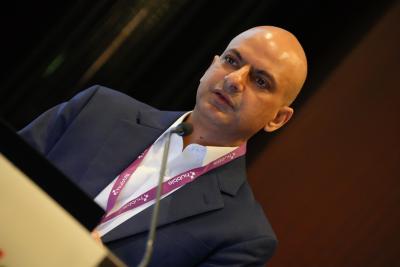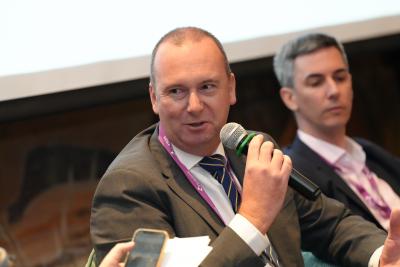Apollo Crypto’s Hans Diederen Surveys the Expanding Universe of Crypto Assets

Hans Diederen of Apollo Crypto
Jan 20, 2023
What makes crypto assets valuable? Are crypto assets similar in nature to mainstream asset classes? What are smart contract platforms and the associated ecosystems? How can we better understand the various types and classes of crypto assets? Hans Diederen, Executive Advisor (Asia) for Apollo Capital, offered delegates his views on these and other questions at the Hubbis Digital Wealth Forum in Dubai on November 15.
Hans opened his talk by explaining that Apollo Capital is an Australian based crypto asset fund manager, and focuses mainly on family offices client investors, and the institutional crypto fund of fund space. He explained that Apollo offers one of the longest histories in the institutional type of fund management business for digital assets, and that they manage their funds very actively.
Building knowledge
“I am here today because a key role for our firm is to build education and understanding around these assets,” he told delegates. “We try to help the traditional finance world understand crypto assets better by looking at traditional asset classes and seeing how they actually derive value and then applying that to digital, or crypto, assets. And I can say that actually crypto assets are not so different in the way they create value as you might initially think.”
Rights, utility, and belief
Referring to a very concise and helpful slide presentation, Hans explained that any investments assets derive value from one or a combination of: rights attached to the asset (such as with equity or debt), the utility the asset provides (such as for commodities), and the belief or perception that there is value (for example with Gold, Currency, Art, Collectibles and so forth.
Hans then reported that actually crypto assets as a whole accrue value across all of these categories. Rights derive from cash flows/code through smart contracts. Utility derives from smart blockchains like Ethereum. Perceived value exists in cryptocurrencies such as the bellwether Bitcoin.
Perceived value (belief)
He expanded on the concept of perceived value. He said in the mainstream world, people have long believed that currencies have value, although actually they are pieces of paper that have no intrinsic value, and ever since the gold standard was abolished in 1971, all currencies are issued backed by the trust in the one who is issuing the currency or printing the currency. And that's why they are called ‘fiat’ currency, as ‘fiat’ stands for trust. And he said most, if not all, fiat currencies eventually will either disappear or decline to zero, mainly due to inflation plus the hyperinflation.
But gold has been used as a physical medium of exchange throughout history. In comparison, Bitcoin has no rights attached, no intrinsic value and limited utility value, but it is the oldest crypto asset and is portable, fungible, divisible, durable, and scarce, as only 21 million Bitcoin will ever be in issue.
Belief in Bitcoin
“Bitcoin has unique properties and is an immensely powerful story, it is essentially digital gold,” he explained, adding that in five ways – being portable, fungible, divisible, durable, and scarce, gold and Bitcoin are very similar indeed.
He noted that Bitcoin was first mined in January 2009 and the first known commercial exchange was of two pizzas, paid for by 10,000 Bitcoins in May 2010. By November 15, 2022, he noted, even with the bear market in Bitcoin and other cryptocurrencies, the total market capitalisation of Bitcoins that have been mined (around 90% to 92% of all Bitcoins that could be mined) is around USD350 billion.
“With many different attributes,” he said, “we and many others actually claim that Bitcoin is more valuable than gold.”
He said if Bitcoins in issue were value comparable to gold mined each Bitcoin could be worth more than USD500000.
Utility and Ethereum
He shifted his attention to utility as a value driver and noted that Ethereum is by far the most prominent such crypto asset, since its arrival in the form of an ICO [Initial Coin Offering] in 2014.
He explained that Ethereum is the most well-known commodity-like crypto asset, developed in part due to some inflexibilities (scalability) of bitcoin’s blockchain, and that ETH represents the largest decentralised blockchain using Smart Contracts, which are automated programmes that execute transactions without the need for an intermediary.
Cryptos with rights attached or embedded
And Hans then addressed the third category, namely crypto assets with rights attached.
He said equity-like crypto assets derive value from (cash flow) rights attached, the rights automatically flow according to the code (the smart contract), and that many DeFi [Decentralised Finance] applications are equity-like crypto assets.
He explained that debt-like crypto assets attract value through interest payments from borrowers, that that can be in the form of aTokens, representing a deposit into the lending market (such as a Certificate of Deposit), and that the interest rate is algorithmically calculated and applied autonomously via smart contracts.
Currency-like crypto assets are best represented by stablecoins, which are designed to be pegged to a fiat currency, Hans also noted. Stablecoins do not accrue value. In this category there are also cryptocurrencies designed to function as medium of exchange such as Litecoin (LTC) and Bitcoin Cash (BCH), and these are designed to achieve remarkable volumes of transactions per second.
A world of opportunity
He closed his talk with several conclusions to summarise his views. He said crypto assets are complex as we cannot touch or feel them. Some crypto assets are equity-like, some are debt/commodity or currency-like. Crypto assets can accrue value in much the same way as traditional assets. Value comes from rights attached, the utility they provide and/or the belief in the crypto asset.
And his final word was that Apollo’s investment activities are focused on commodity and equity-like crypto assets (coins and tokens) as the utility they provide is ground-breaking.
“At Apollo, this is our investment approach, because that's where we believe the innovation of blockchain is the most intense and achieving the most breakthroughs now and in the foreseeable future,” he concluded.
A short note on Hans Diederen
It was just under a year ago that Apollo Capital announced the appointment of Hans Diederen as Executive Advisor for Asia. Apollo Capital, founded in Australia, in 2018, is a pioneer crypto asset investment firm and is expanding internationally .
Hans is a seasoned Asian financial services executive with a strong reputation in the field of ultra-high net worth wealth management. He has been based in Asia since 2006. Whilst based in Hong Kong, Hans was CEO of ABN AMRO Private Banking Asia and the Middle East. He has served since as Managing Director and Head of Southeast Asia at Merrill Lynch in Singapore, and he also had a stint as CEO Private Banking at Credit Agricole/Indosuez Wealth Management Asia. Before joining Apollo Capital, Hans worked for a large Asian business family.
He has been a crypto enthusiast and investor since 2016 and firmly believes digital assets should be part of any investment portfolio. He believes blockchain and smart contracts are a technological innovation that will result in a fundamental disruptive change in conventional finance and trust systems of businesses and societies at large, and that this new digital finance era has created an entirely new asset class for investors.

Executive Advisor (Asia) at Apollo Crypto






